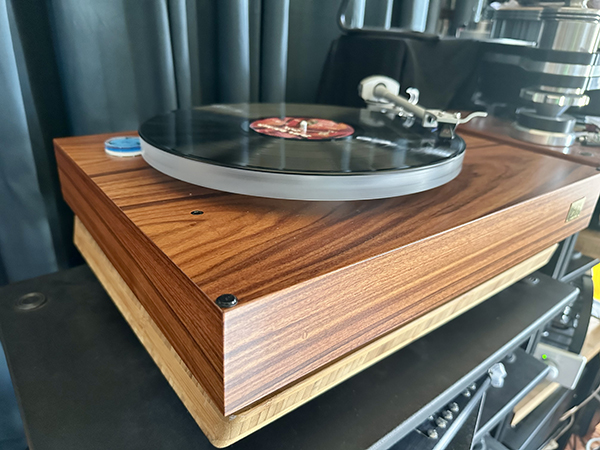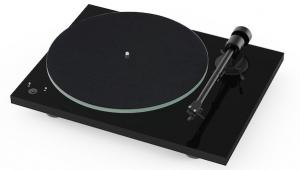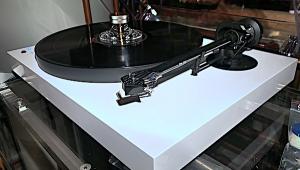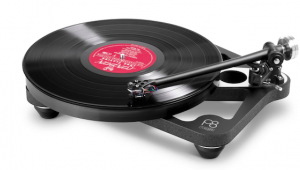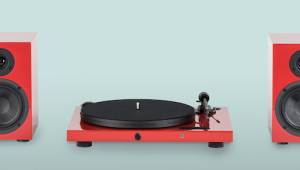Audio Note TT-One Deluxe Turntable
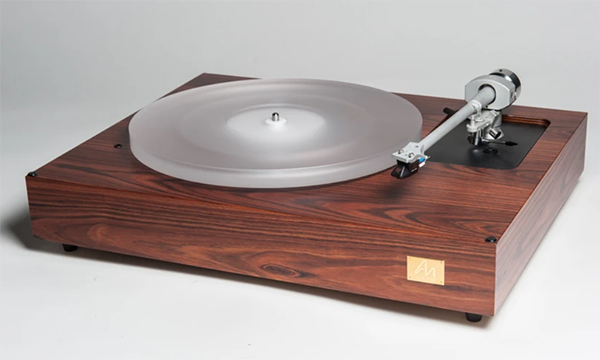
Audio Note — and its Japanese forebear, Kondo Audio Note — have long been revered for their turntables, tube amps, DACs, and speakers. In the mid-1990s, during the golden age of CDs, I took the plunge into high-end audio with a rare, Japan-made, Audio Note M2 preamplifier. This wasn’t just any acquisition, mind you — it was a sonic coronation for my Manhattan walk-up apartment. Noted spin doctor and occasional AP contributor Michael Trei — then one-half of the Audio Note U.S. distribution team, alongside our sister site Stereophile’s own Herb Reichert — personally delivered that M2 to my place. For me, it wasn’t “just” a preamp — it was the start of a lifelong journey into an audio obsession ignited by the passion of many an industry icon.
After a few years, I stupidly (and regrettably) let go of that M2 — a preamp so transparent, its sound flowed like liquid whole notes. It was a chameleon, effortlessly adapting to any source I threw at it. Under its svelte metal casework, a single 6SN7 dual-triode tube brought music to life, while a valve-rectified power supply, a combo of 6X5 and ECL82 tubes, laid the foundation for sonic solidity. One could even say the birth of the American listening room owes a debt of gratitude to the Japanese jazu kissa. It’s a testament to the enduring quality of those classic tubes, and how everything truly comes full circle. (If you’re interested, I’ve got even more tubes-related commentary down in Footnote 1, which follows after the end of this review.)
At any rate, all of that preamble leads me to our review subject today — namely, Audio Note’s TT-One Deluxe turntable ($3,430), which has been duly paired with the company’s own AR One/II tonearm ($1,276) and IQ I MM cartridge ($635) for maximum Audio Note magnificence. Let’s now see what this Audio Note component combo is made of and how it all fares together, come listening/evaluation time.
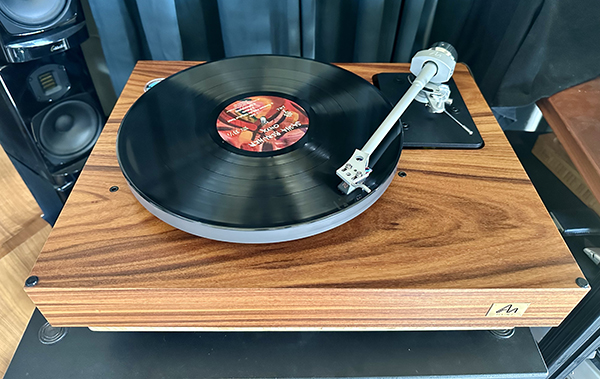
Features & Specs
The Audio Note TT-One Deluxe works on a unique suspension system. This two-speed, belt-driven turntable utilizes a three-point, suspended sub-chassis with an acrylic platter. A high-torque motor sits within the plinth, isolated by steel springs for vibration control. This uncommon suspension purportedly isolates the platter and tonearm for cleaner audio.
At 7in (170mm) tall and 18in (470mm) wide, the TT-One fits neatly into most setups. It includes soft feet and a lid. Customers can choose from classic wood veneers like Black Ash, Rosewood, or Cherry, or you can opt for a modern satin or high-gloss finish.
The TT-One turntable boasts a platter machined from a solid block of acrylic, like a record reborn. This platter even has a special cutout for accommodating your record’s label, ensuring a perfect fit. Audio Note says this acrylic platter sounds so good because it practically is vinyl, eliminating the need for a mat altogether. And guess what? They don’t even include one here — because with a platter like this, who needs it?
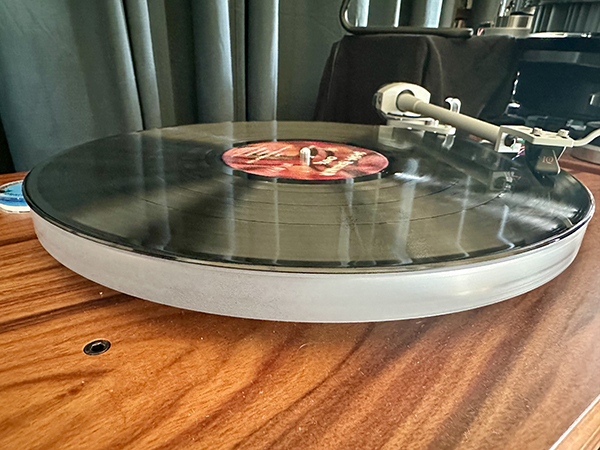
The TT-One’s thin-walled plinth is made from “selected void-free Finnish birch ply, the same material we use for all of our classic line of loudspeaker cabinets,” according to the Audio Note parlance on the company’s official site. They continue, “In fact, the plinth of your Deluxe TT has been hand made in the same Austrian factory as our loudspeakers, and by the same skilled artisans.”
Boasting premium internal components, the TT-One’s interior power supply includes custom copper foil Audio Note capacitors — the same used in Audio Note’s high-end amps. An optional Deluxe PSU external power supply ($2,925) is also available.
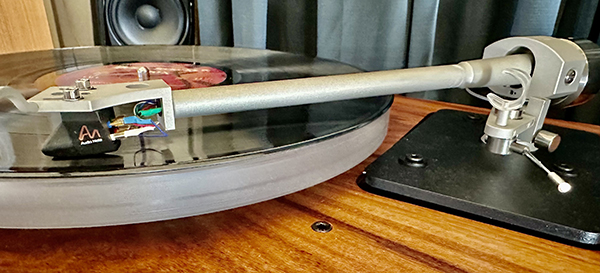
The TT-One was fashioned with one of Audio Note’s own precision-crafted, 9in tonearms in mind — either the ARM One/II that’s part of this review, the ARM Two/II ($1,825), or the ARM Three/II ($2,465). While this table can accommodate other brand’s tonearms, the TT-One is designed specifically for utilizing an Audio Note arm.
For one thing, the table’s unique suspension system is specifically tuned for these arms, intended to maximize clarity and detail. “The main bearing shaft is steel, which rides on a steel ball bearing,” Audio Note (UK) rep Martin Grennall told me via email. “The bearing house is made from brass, with two separate brass bushes inserted at the top and bottom. Anti-skate weight and counterweights are made from steel. There is an additional ‘extra heavy’ counterweight available for use with the IO I and IO II [MC] cartridges, which is made from tungsten.” (The IO I has an SRP of $5.030, while the IO II goes for $7,517.)
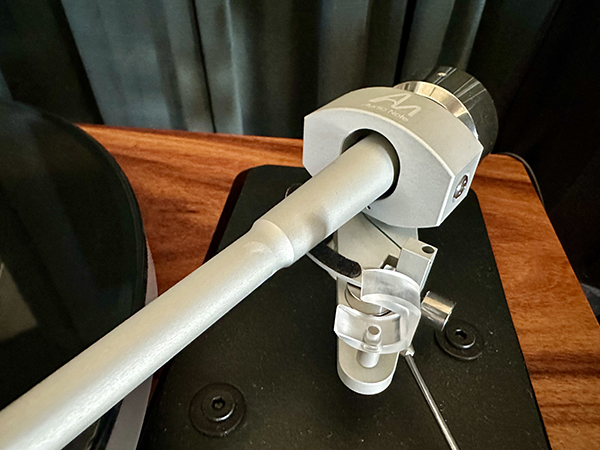
Continued Grennall, “All [Audio Note] tonearms have an internal arm cable that is terminated to a piece of our interconnect cable in the arm base. The ARM One/II uses copper internal wire and AN-A copper external cable, [while] ARM Two/II uses our extremely thin 3-strand silver wire internally and AN-V silver interconnect externally. ARM Three/II uses the same silver wire internally as ARM Two/II, but our AN-Vx silver cable externally. Tonearm and headshell are machined from a solid aluminum block. The inside of the arm tube is tapered, with the wall thickness becoming less towards the headshell.”
Grennall then concluded, “Both the TT-One Deluxe and TT-Two Deluxe [turntables] have internal PSU boards with jumpers for use with the external Deluxe Power Supply. It’s not possible to buy either deck without the standard PSUs installed, as the boards are needed to route power from the Deluxe PSU to the motors, bypassing the standard PSU components.”
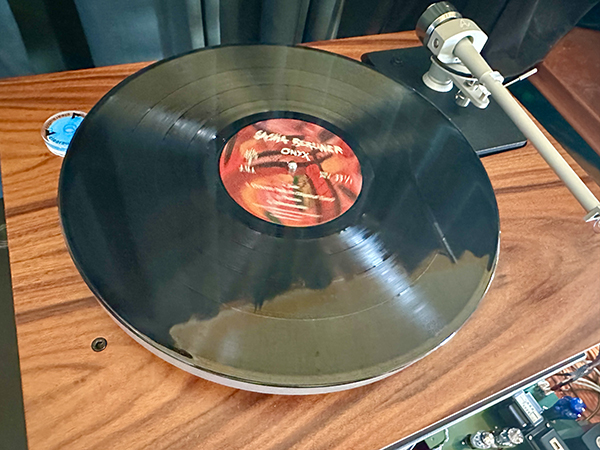
Setup
With all that in mind, it was setup time. The TT-One Deluxe table and IQ 1 MM cart arrived together in a secure box, while the ARM One/II tonearm had its own sturdy packaging. Thankfully, the clear and user-friendly Audio Note online manual made setup a snap.
Leveling was surprisingly simple. After removing the transport bolt, I adjusted three recessed nuts to level the subplatter, armboard, and tonearm simultaneously. The platter/spindle assembly then gently lowered into the open bearing mount.
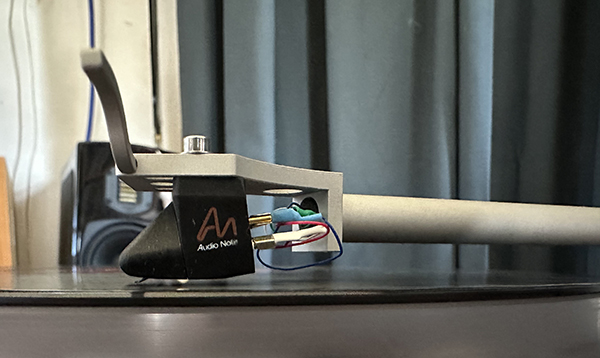
Cartridge setup was straightforward except for the stiff, triangular leads on the four tonearm wires. A minor adjustment with a screwdriver (a toothpick will also make do!) ensured a snug fit on the cartridge pins. VTF (recommended between 1.5g to 2.5g) and alignment were a cinch using my Riverstone Audio Record-Level Stylus VTF Pressure Gauge and Feickert Universal Turntable Protractor, respectively.
For this particular review, amplification came from PrimaLuna EVO 300 Hybrid and Triode Lab 2A3 EVO integrated amps, with phono duties handled by PrimaLuna EVO 400 and Aurorasound VIDA MkII preamps. DeVore Fidelity O/baby, Heretic AD614, and Volti Audio Razz loudspeakers brought the sound to life. Cables from Argent Pur, AudioQuest, Analysis Plus, and Triode Wire Labs completed the chain. Power conditioning was provided by AudioQuest and IsoTek. For further table-to-table comparison, I used my Thorens TD 124 turntable with The Wand Plus 9in tonearm (whose own review is forthcoming!) and Luxman LMC-5 cartridge.
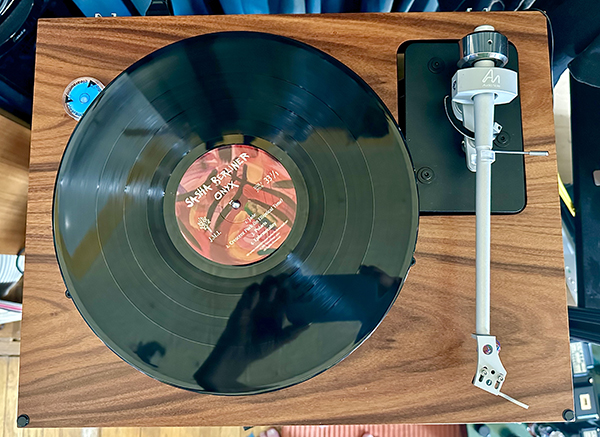
The TT-One table is a joy to use, from its silky cueing lever to the silent function of its pully and platter system. One caveat, though — footfall was a terror! Even stationed atop an IKEA Aptitlig bamboo platform and three stacks of 2 x 2in mahogany squares, I had to literally tiptoe across the rug-covered, suspended beamed floor of my 100-year-old building in order to not disturb playback.
That said, the TT-One table’s isolation system nonetheless works beautifully, offering a high degree of silence, purity, and sublime sounds, but take heed — a heavy platform is required, even mandatory.
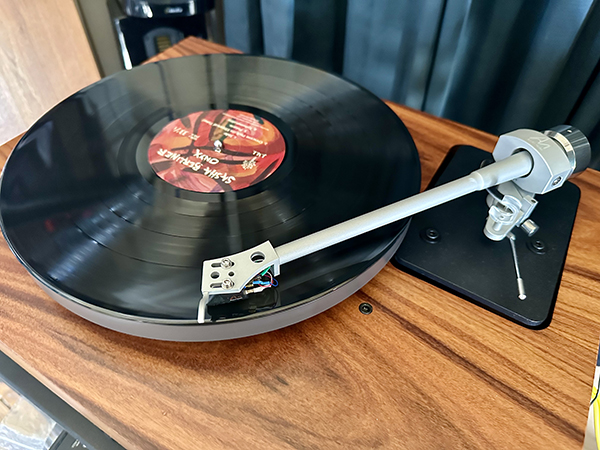
Listening Sessions
Forget price comparisons, for the TT-One transcends them. It’s a sonic anomaly, a fusion of modern and vintage. The soundstage is expansive, with sharp imaging that propels you right into the music. But it doesn’t stop there. The bass is a warm embrace, not a clinical punch, reminiscent of classic hi-fi. The mids bloom with richness, and the treble — while generous — stays smooth and inviting, a masterclass in balance.
Based on old Systemdek designs, the TT-One has plenty of old-world UK PRaT (a.k.a. Pace, Rhythm, and Timing), represented in its serious jump factor, enveloping sense of air, and extension. This table, with this particular arm and cartridge, is just as comfortable spinning old Argo and Deutsche Grammophon classical titles as it is with Savoy, Impulse!, Blue Note, and Prestige jazz LPs. It’s one of the least mechanical-sounding turntables I’ve ever heard. It flows for miles. It brings fresh insight and character from well-loved discs. Not that I still own vinyl copies of ’70s classics like Neil Young’s Harvest, Delaney & Bonnie & Friends’ On Tour With Eric Clapton, or Derek and The Dominos’ Layla and Other Assorted Love Songs, but the TT-One would play those vintage rock LPs with considerable respect, tonal purity, and soundstage faithfulness with spot-on veracity, I’m sure.
The TT-One isn’t about pyrotechnics — it’s about musicality. Unlike some equally expensive, more trendy tables, it prioritizes natural rhythm and warmth over artificial bass bombs. This is a turntable for music lovers, not bass junkies. Audio Note poured decades of expertise into this machine, resulting in a sound as captivating as their higher-end offerings. Just like a complete Shindo or Luxman system, the TT-One Deluxe delivers a signature sound that’s pure Audio Note — and a pure sonic delight too, for that matter.
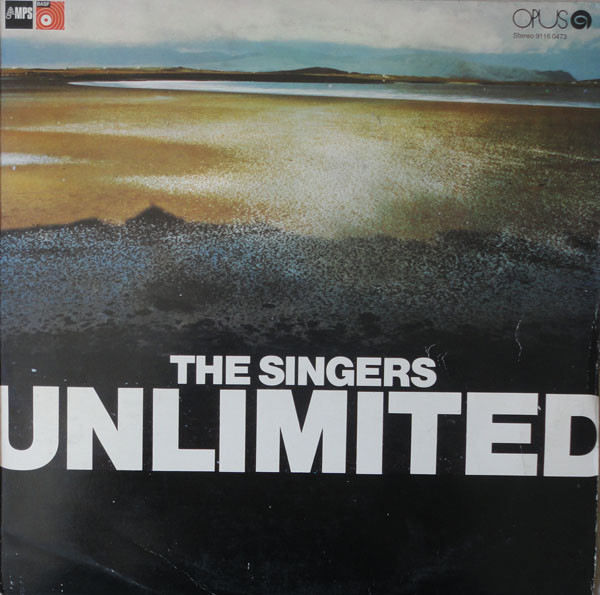
Lately, I’ve been collecting and playing records by The Singers Unlimited, a four-part vocal harmony group from the ’70s who made close to 15 albums on the revered German MPS label. Backed by some of the finest jazz musicians of that era — with two records featuring pianist Oscar Peterson and accordionist Art Van Damme, respectively — The Singers Unlimited’s output is nothing short of revelatory. In our current age of anti-singers using software to correct or enhance their lack of vocal talent, The Singers Unlimited’s Gene Puerling, Len Dresslar, Bonnie Herman, and Don Shelton all stacked their rich harmonies in perfect cadence, alignment, and tonal wonder — and then they stacked them even further, pioneering studio techniques in the 1970s that have yet to be equaled, in my opinion.
The TT-One rendered The Singers Unlimited with a fidelity that bordered on the eerie. It wasn’t just the precisely placed notes but the very tone itself — that level of depth and surprising breadth you hear in the secluded air of a perfect studio performance. Those voices, each distinct, bloomed across the room like close friends. Miles of tone, yes — a control over the very texture of sound.
At this point, I began thinking the TT-One Deluxe table wasn’t a machine at all. It was a meticulously rendered, well-crafted sound device. This table also played jazz and classical LPs with moving intimacy and clarity, and an urgency that bordered on, well, emotional blackmail! The fact is, every record I played on the TT-One Deluxe revealed its heart and soul.
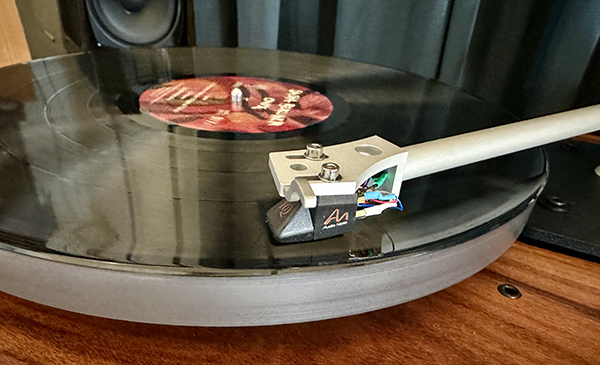
Conclusions
The Audio Note TT-One Deluxe turntable’s price tag — which, all-in, with cart and arm included, is around $6K — might make your eyes water, and your bank account cry. But for those of you who crave the raw, unadulterated humanity of music and for whom perfectly relayed vinyl playback is a language understood more in the heart than the head, the Audio Note TT-One Deluxe is sweet surrender — a revelation. As my stepfather — a man more comfortable with the NASCAR roar than a Stravinsky concerto — might have put it in his gruff, entirely un-British drawl, “That there’s a honey.”
For more about Audio Note, go here.
To find an authorized Audio Note dealer, go here.
Footnote 1. The 1990s offered a surplus of readily available NOS 6SN7s and other rebranded tubes. The 1976 closure of RCA’s Harrison, New Jersey plant/fortress was bad news for fans of tube gear. But for Japan’s discerning hi-fi enthusiasts, it was a golden opportunity — they weren’t just buying the remaining stock of American tubes, they were reportedly acquiring the very machines that birthed these tubular legends. –KM
